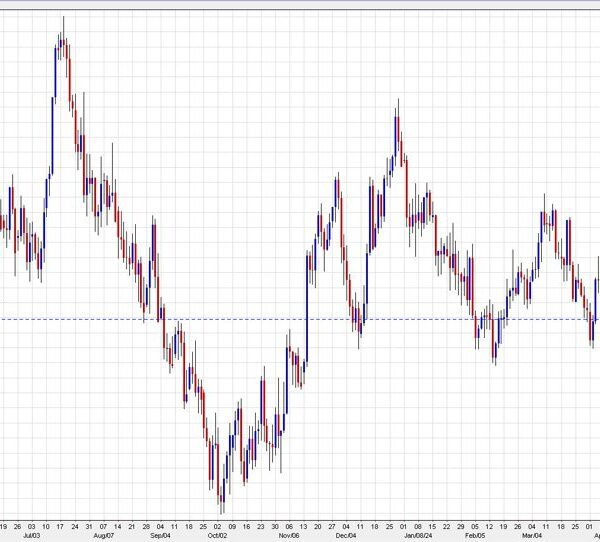Martinns/iStock via Getty Images
July 1 marked the beginning of the second half of 2024, and while “New Half-Year’s Day” may not be an official holiday, it feels like the starting point of some new regimes. We got two important data points last week that I believe should bring us closer to the long-awaited start of Federal Reserve (Fed) rate cuts.
The first round of legislative elections took place in France on June 30, with exit polls/initial results indicating that Marine Le Pen’s far-right National Rally party and allies gained the most votes. And, British voters are expected to usher in a Labour government after 14 years under Tory rule.
Can the strengths of the first half continue?
Let’s start by taking a moment to recap the first six months of the year. It was a strong period for most risk assets. Global equities, as represented by the MSCI World Index, posted double-digit gains for the first half of the year.1 The standout was the US, with the S&P 500 Index gaining about 15% during the period.2 Other major stock indices also experienced gains, but they were more modest.
Fixed income performance was mixed. Some government bonds experienced losses for the first half of the year, including Japanese government bonds.3 Emerging market bonds experienced gains, as did US high-yield bonds.4
Commodity prices also experienced significant gains, especially energy and precious metals.5 Gold prices in particular rose in the first half of the year,6 helped by continued central bank demand, as well as investor interest in hedging geopolitical risks and investor concerns about rising budget deficits.
Most investors are hoping for a continuation of this market environment – at least when it comes to risk assets. However, many investors are worried it won’t continue. I think it will, given that a key driver of this market environment – expectations of Fed easing – remains in place.
Confidence may be building for the Fed
We got two important data points last week that I believe should increase Fed confidence and bring us closer to the start of Fed rate cuts: June core Personal Consumption Expenditures (PCE) and the final reading of the University of Michigan consumer inflation expectations for June.
Core PCE is the Fed’s preferred measure of inflation. It has now fallen to 2.6% year-over-year, moving closer to the Fed’s 2% target.7 And it is now below the level where the Fed expects core PCE to be at year end, as per the June dot plot. Further, now that core PCE has fallen to 2.6% and the fed funds rate is still above 5.3%, monetary policy is now more restrictive than any time since September 2007.8
The Fed also pays very close attention to consumer inflation expectations. After briefly rising, one-year-ahead University of Michigan consumer inflation expectations dropped back to 3% from 3.3% in the June final reading.9 While not at the Fed’s target, this is reassuring as it indicates that consumer inflation expectations are well-anchored.
The Fed looks at a mosaic of data in making its monetary policy decisions. However, these two data points arguably carry more weight with the Fed and substantially increase the odds of a September rate cut, in my view.
Recall that in June 2022, Fed Chair Jay Powell pointed to two data points – Michigan consumer inflation expectations and another inflation gauge (though not the Fed’s preferred one), Consumer Price Index – as reasons for hiking rates more than expected.
Such data carries significant import with the Fed, and just as it convinced the Fed to get more hawkish, it can convince the Fed to get more dovish. My takeaway: A monetary policy “regime change” is coming soon.
French parliamentary elections: First-round results
A “regime change” appears to be coming in France as well. The first round of French legislative elections took place on June 30, and exit polls/initial results indicate Marine Le Pen’s far-right National Rally (RN) party and allies gained the most votes (around 34%), with the far-left New Popular Front (NPF) alliance in second (around 29%) and President Emmanuel Macon’s centrist Ensemble in third (around 22%).10
Now keep in mind the first round was to decide which candidates will go forward to the second round in each of the 577 constituencies. Only candidates with more than 12.5% of the first round vote qualify to advance to the second round, and those gaining more than 50% are automatically elected.
Initial seat projections from research and polling firm Ipsos suggest that RN will win 230-280 seats, just short of the 289 needed for a majority. The NPF is expected to gain 125-165 seats, and Ensemble is expected to gain 70-100 seats. We would note that such projections are hazardous and uncertain at best.
It is not clear that any party will gain a parliamentary majority, especially since Macron has appealed to the electorate to block the far-right RN party. Jean-Luc Mélenchon, leader of the NPF alliance, has asked his candidates who came third in districts in which the RN candidate is in the lead, to step down. The strategy is to swing second-round votes in these constituencies away from the RN party, rather than split the anti-RN vote between centrist and leftist candidates.
The second round takes place on July 7, and the outcome is far from clear. To simplify, we entertain three possible scenarios: far-right majority, far-left majority, and a temporary administrative solution, such as the nomination of a technocratic government or a continuity cabinet of some kind (a government must be formed from the new parliament because there cannot now be another election for at least 12 months).
Investment implications of the French election
Both far-right and far-left governments would likely boost France’s already large fiscal deficit and would worsen relations with the European Union. We suspect a temporary administrative solution has the highest probability and believe this would be the most reassuring outcome for financial markets, perhaps triggering a bit of a relief rally.
However, if a continuity or technocratic government is stymied by a strong RN or held back by being beholden to the NFP, President Macron may dissolve the National Assembly and call another early election after a year – a scenario being discussed in some political circles. The uncertainty may not be resolved fast. But for now, all eyes are on the second round.
Temporary administrative solution
This is the outcome that would be most positively received by markets, in our view. This scenario is likely to result in the most continuity, greatest stability, and the least uncertainty, and so we believe French equities are likely to rise in this scenario.
We expect this outcome to be the most pro-EU, and so the euro and European equities are likely to rise. In addition, we expect French bond yield spreads versus Germany will probably narrow because this government is likely to be the most fiscally prudent. Likewise, peripheral country spreads are likely to narrow because this outcome would be the least damaging for the EU project.
Far-right majority
This outcome would not be well received by markets, in our view, but it would not be as negative as a far-left majority, especially given the recent reassurances that Marine Le Pen has given.
However, given that it would likely damage the strength of the European Union, the euro would be expected to weaken. Given the greater political uncertainty, we believe it would likely be negative for French equities and European equities while French and peripheral country bond yield spreads versus Germany could widen.
Far-left majority
We expect this outcome would be the most negatively received by markets. It would likely result in the greatest fiscal largesse, causing French bonds to sell off. This would also damage the strength of the European Union, which could weaken the euro.
Given the greater political uncertainty, we believe it would likely be negative for French and European equities as well as the euro, and would cause a widening of French and peripheral bond spreads versus Germany.
No matter what the outcome, in our opinion the thesis for owning European equities remains. Their valuations are low and they have greater cyclical exposure, which we expect to benefit when the global economy re-accelerates.11 Having said that, these stocks could experience significant volatility in the very near term because of French elections.
Regime change in the UK
One thing we can be fairly certain of is that there will be a regime change in the UK. British voters go to the polls on July 4 and are expected to usher in a Labour government after 14 years under Tory rule.
Polling indicates that the incoming Prime Minister will be given a strong mandate by the electorate and will be able to govern unlike the previous two PMs (Sunak and Truss), which should bring stability and certainty. Once elections are over, this should give investors the opportunity to re-focus on fundamentals.
Looking ahead
This will be a holiday week in the US, but we will be getting a lot of important data. Purchasing Managers’ Indexes for the US, eurozone, the UK, and Japan will be released, giving us a sense of where these economies are headed. In addition, eurozone inflation will be important.
There are concerns this might clock in higher than expected, but that would not concern me. We know the disinflationary journey is an imperfect one, and there will be data points along the way that disappoint.
I expect the European Central Bank will not be rushing to cut rates again, so we are already prepared to be patient; the important point is that monetary policy is moving in the right direction, just gradually. And we will be getting Federal Open Market Committee minutes – typically helpful insight into what Fed officials are thinking – and several pieces of important US jobs data this week. I suspect they will give the Fed further reasons to begin cutting before the end of the third quarter.
As I mentioned above, as we enter the second half of the year, there are investor fears that the environment will change and not be as supportive of risk assets. While I wouldn’t be surprised to see a relatively brief digestion period after the strong run-up in the first half of the year, I do believe the environment will remain supportive of risk assets globally.
The difference may be that we see a market broadening to smaller-cap stocks and those stock markets that did not perform as well in the first half of the year.
With contributions from Paul Jackson, Arnab Das, and Emma McHugh
Dates to watch
|
Date |
Event |
What it tells us |
|---|---|---|
|
July 1 |
UK Nationwide Home Price Index |
Indicates the health of the housing market. |
|
Germany Consumer Price Index |
Tracks the path of inflation. |
|
|
US ISM Manufacturing Purchasing Managers’ Index |
Indicates the economic health of the manufacturing sector. |
|
|
July 2 |
Eurozone Consumer Price Index |
Tracks the path of inflation. |
|
Eurozone Unemployment |
Indicates the health of the job market. |
|
|
US Job Openings and Labor Turnover Survey |
Gathers data related to job openings, hires, and separations. |
|
|
Japan Services Purchasing Managers’ Index |
Indicates the economic health of the services sector. |
|
|
July 3 |
Eurozone Purchasing Managers’ Index |
Indicates the economic health of the manufacturing and services sectors. |
|
UK Purchasing Managers’ Index |
Indicates the economic health of the manufacturing and services sectors. |
|
|
Eurozone Producer Price Index |
Measures the change in prices paid to producers of goods and services |
|
|
US Services Purchasing Managers’ Index |
Indicates the economic health of the services sector. |
|
|
US ISM Non-Manufacturing Purchasing Managers’ Index |
Indicates the economic health of the non-manufacturing sector. |
|
|
Federal Open Market Committee Meeting Minutes |
Gives further insight into the central bank’s decision-making process. |
|
|
July 4 |
Bank of England Credit Conditions Survey |
Reports on trends and developments in credit conditions. |
|
July 5 |
Germany Industrial Production |
Indicates the economic health of the industrial sector. |
|
US Employment Situation Report |
Indicates the health of the job market. |
|
|
Canada Employment Report |
Indicates the health of the job market. |
Footnotes
1 Source: MSCI. From Jan. 1 through June 30, 2024, the MSCI World Index returned 11.6%.
2 Source: S&P. From Jan. 1 through June 30, 2024, the total return of the S&P 500 Index was 15.29%.
3 Source: S&P. From Jan. 1 through June 30, 2024, the S&P Japan Government Bond Index returned -3.12%.
4 Sources: S&P and Bloomberg. From Jan. 1 through June 30, 2024, the JP Morgan Emerging Market Bond Index Global Diversified Composite returned 2.34%, and the Bloomberg. S&P US High Yield Corporate Bond Index returned 2.72%
5 Source: S&P. From Jan. 1 through June 30, 2024, the S&P GSCI Energy Index returned 16.47% and the S&P GSCI Precious Metals Index returned 13.48%.
6 Source: S&P. From Jan. 1 through June 30, 2024, the S&P GSCI Gold Index returned 12.66%.
7 Source: US Bureau of Economic Analysis, June 28, 2024
8 Source: Bloomberg, as of June 28, 2024
9 Source: University of Michigan as of June 28, 2024
10 Source: Bloomberg, as of June 30, 2024
11 Source: MSCI. The MSCI Europe Index price-to-earnings (P/E) ratio was 14.92 as of May 31, 2024. This compares favorably to the MSCI World Index P/E of 21.70.
Important information
NA3678737
Image: Tim Graham / Getty
All investing involves risk, including the risk of loss.
Past performance does not guarantee future results.
This does not constitute a recommendation of any investment strategy or product for a particular investor. Investors should consult a financial professional before making any investment decisions.
In general, stock values fluctuate, sometimes widely, in response to activities specific to the company as well as general market, economic and political conditions.
The risks of investing in securities of foreign issuers, including emerging market issuers, can include fluctuations in foreign currencies, political and economic instability, and foreign taxation issues.
Stocks of small and mid-sized companies tend to be more vulnerable to adverse developments, may be more volatile, and may be illiquid or restricted as to resale.
Fixed-income investments are subject to credit risk of the issuer and the effects of changing interest rates. Interest rate risk refers to the risk that bond prices generally fall as interest rates rise and vice versa. An issuer may be unable to meet interest and/or principal payments, thereby causing its instruments to decrease in value and lowering the issuer’s credit rating.
Commodities may subject an investor to greater volatility than traditional securities such as stocks and bonds and can fluctuate significantly based on weather, political, tax, and other regulatory and market developments.
Fluctuations in the price of gold and precious metals may affect the profitability of companies in the gold and precious metals sector. Changes in the political or economic conditions of countries where companies in the gold and precious metals sector are located may have a direct effect on the price of gold and precious metals.
Businesses in the energy sector may be adversely affected by foreign, federal or state regulations governing energy production, distribution and sale as well as supply-and-demand for energy resources. Short-term volatility in energy prices may cause share price fluctuations.
The MSCI World Index is an unmanaged index considered representative of stocks of developed countries.
The S&P 500® Index is an unmanaged index considered representative of the US stock market.
Personal Consumption Expenditures (PCE), or the PCE Index, measures price changes in consumer goods and services. Expenditures included in the index are actual US household expenditures. Core PCE excludes food and energy prices.
Purchasing Managers’ Indexes (PMI) are based on monthly surveys of companies worldwide and gauge business conditions within the manufacturing and services sectors.
The Survey of Consumers is a monthly telephone survey conducted by the University of Michigan that provides indexes of consumer sentiment and inflation expectations.
The Consumer Price Index (CPI) measures changes in consumer prices. Core CPI excludes food and energy prices, while headline CPI includes them.
The S&P Japan Government Bond Index is designed to track the performance of local-currency denominated government bonds issued by Japanese issuers.
The JP Morgan Emerging Markets Bond Index Global Diversified Index is a uniquely weighted US dollar-denominated emerging market sovereign index for US dollar-denominated Brady bonds, Eurobonds, traded loans, and local market debt instruments issued by sovereign and quasi-sovereign entities.
The S&P U.S. High Yield Corporate Bond Index is designed to track the performance of US dollar-denominated, high-yield corporate bonds issued by companies whose country of risk use official G-10 currencies, excluding those countries that are members of the United Nations Eastern European Group.
The S&P GSCI Precious Metals Index is a benchmark for investment performance in the precious metals market.
The S&P GSCI Gold Index tracks the price of COMEX gold futures.
The S&P GSCI Energy Index is a benchmark for investment performance in the energy market.
The MSCI Europe Index captures large- and mid-cap representation across a universe of developed market countries in Europe.
Risk assets are generally described as any financial security or instrument that carries risk and is likely to fluctuate in price.
The federal funds rate is the rate at which banks lend balances to each other overnight.
The Federal Reserve’s “dot plot” is a chart that the central bank uses to illustrate its outlook for the path of interest rates.
Yield spread is the difference between yields on differing debt instruments, calculated by deducting the yield of one instrument from another.
Disinflation, a slowing in the rate of price inflation, describes instances when the inflation rate has reduced marginally over the short term.
The Federal Open Market Committee (FOMC) is a committee of the Federal Reserve Board that meets regularly to set monetary policy, including the interest rates that are charged to banks.
The price-to-earnings (P/E) ratio measures a stock’s valuation by dividing its share price by its earnings per share.
The opinions referenced above are those of the author as of July 1, 2024. These comments should not be construed as recommendations, but as an illustration of broader themes. Forward-looking statements are not guarantees of future results. They involve risks, uncertainties and assumptions; there can be no assurance that actual results will not differ materially from expectations.
What Does France’s Election Mean For Markets? by Invesco US














